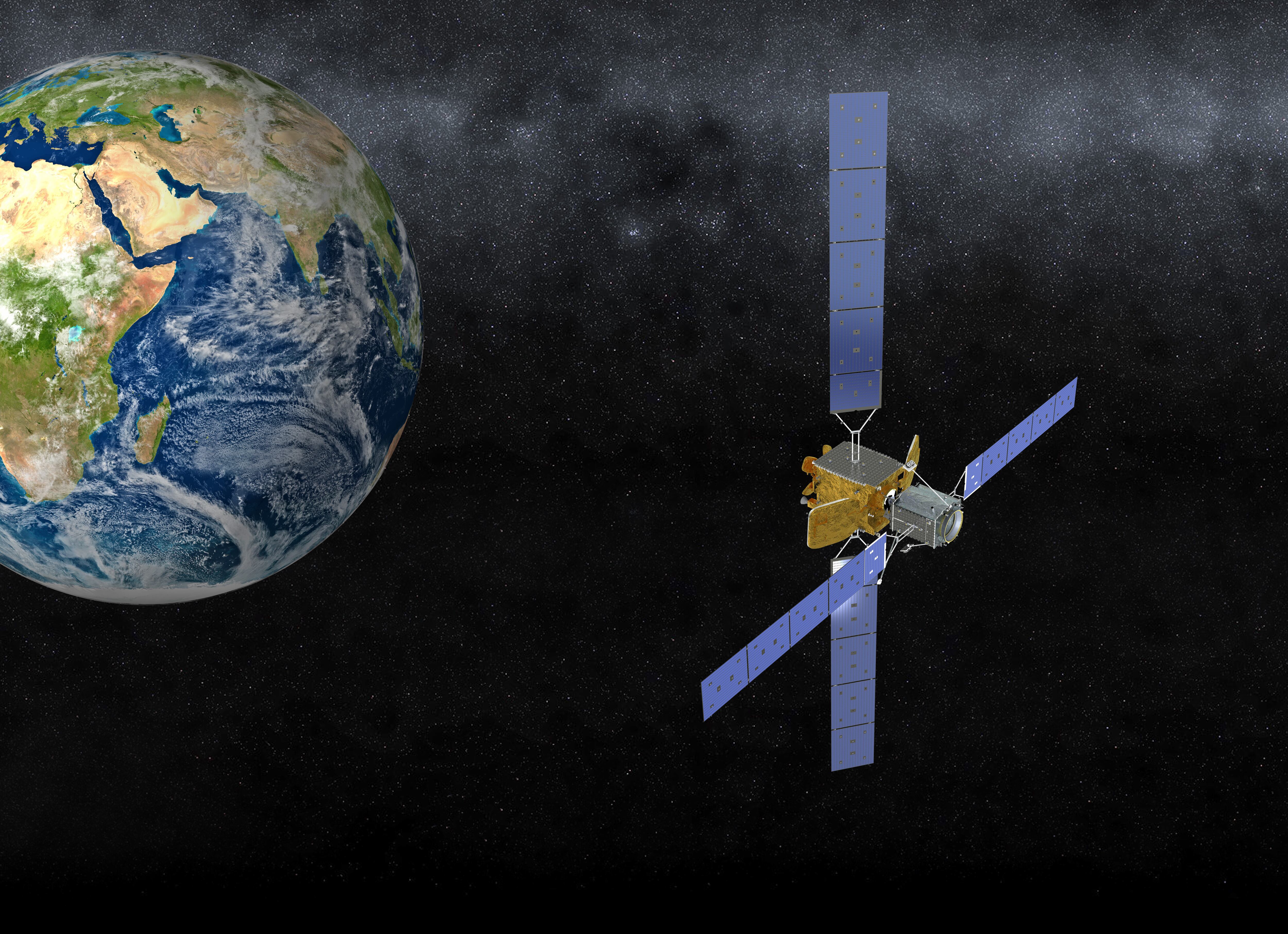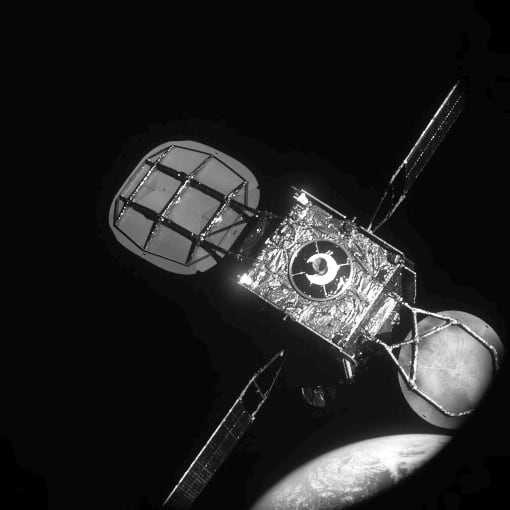A Northrop Grumman space vehicle successfully docked with a commercial satellite communications satellite Feb. 25, marking the first time two commercial satellites have docked on orbit, the company announced Feb. 26.
SpaceLogistics LLC, a Northrop Grumman subsidiary, plans to use its Mission Extension Vehicle-1 to provide life extension services to Intelsat 901, a communications satellite. The docking is the first iteration of the company’s new satellite life-extension service.
The Pentagon is interested in exploring the company’s new services. The Space and Missile Systems Center awarded SpaceLogistics a contract through the Space Enterprise Consortium in July to study the possibility of servicing four national security satellites on orbit.
RELATED

“Our Mission Extension Vehicle provides an innovative, satellite life extension service,” said Tom Wilson, president, SpaceLogistics LLC. “Together, Northrop Grumman, SpaceLogistics LLC and Intelsat have taken the first step in pioneering in-space logistics services for both commercial and government customers.”
A satellite’s lifespan is limited by the amount of fuel it has. Without fuel, the satellite loses the ability to maneuver, either to stay in its correct orbit or to move to a new one. Even if the on board components remain functional, without fuel the satellite is destined for the graveyard. SpaceLogistics wants to solve this problem by essentially delivering more fuel to the satellite on orbit. Once launched, their mission extension vehicle can sidle up to a low on fuel satellite, dock with it, and then use its own fuel and propulsion systems to transport the client satellite.
Following its launch on Oct. 9, MEV-1 raised its orbit to about 180 miles above geosynchronous orbit. In December, Intelsat temporarily removed its satellite from service and raised its orbit to match MEV-1. The docking itself took place at 2:15 a.m. ET Feb. 25.
Now, the docked spacecraft will perform on orbit checkouts before MEV-1 relocated Intelsat 901 to its orbit, where it will resume service in March. MEV-1 will provide life extension services to Intelsat 901 for five years before transporting the communications to its final decommissioning orbit. MEV-1, however, will then move on to another satellite to provide similar services. The company claims their spacecraft can perform multiple docking and undocking maneuvers over its 15-year life span.
“Intelsat has been at the forefront of innovation and game-changing new space technology for decades. Pushing the boundaries of what’s possible is in our DNA here — that’s why we didn’t hesitate to sign up to be MEV-1’s first customer,” said Mike DeMarco, executive vice president and chief services officer at Intelsat. “We’re proud to make history with SpaceLogistics LLC and Northrop Grumman on this groundbreaking space milestone.”
SpaceLogistics has plans to expand its on orbit servicing offerings in the coming years. The company says it expects to establish a fleet of satellite servicing vehicles with even more advanced capabilities than MEV-1. Services will include inclination changes, spacecraft inspections, on orbit repairs and assembly.
Nathan Strout covers space, unmanned and intelligence systems for C4ISRNET.








